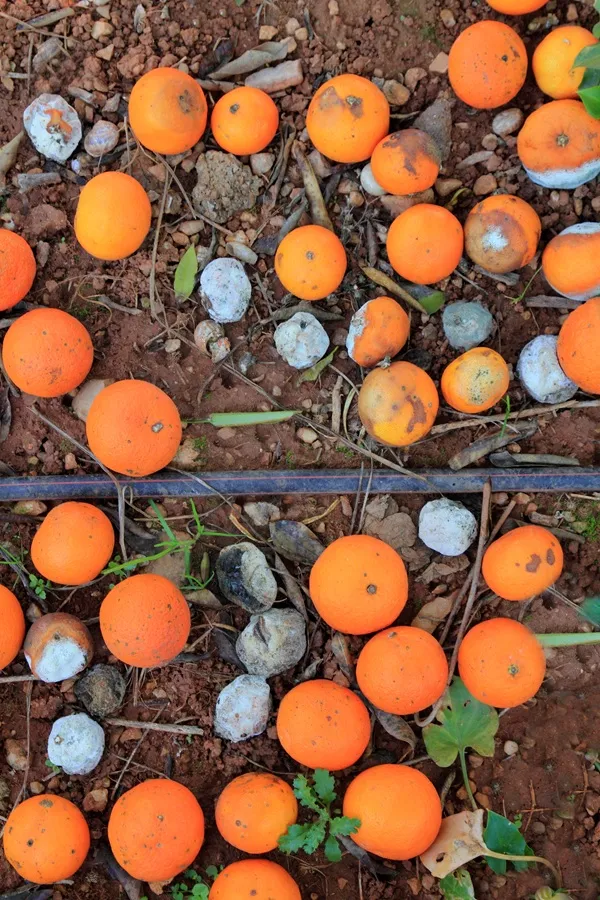Table of Contents
Clementines: The Sweet Jewel of Citrus – A Comprehensive Guide
1. Introduction
Clementines (Citrus × clementina), a hybrid of mandarin and sweet orange, are beloved for their seedless nature, easy-to-peel skin, and sweet, tangy flavor. This guide explores their global varieties, nutritional benefits, cultivation practices, and economic impact.
2. Global Varieties
Clementines vary by region and cultivar:
- Clemenules (Spain): Juicy, sweet, and thin-skinned; dominates European markets.
- Algerian Clementine: Bright orange, slightly tart; popular in North Africa.
- Fina (Spain): Small, intensely sweet; harvested early season.
- Nules (Global): Robust flavor, thick skin; ideal for export.
- Marisol (Spain/Morocco): Early-ripening, vibrant color.
3. Taste & Usage
- Flavor: Sweet with mild acidity, less bitter than oranges.
- Culinary Uses:
- Fresh: Snacked on whole, added to fruit salads, or used as garnish.
- Juicing: Fresh-squeezed juice or mixed in cocktails (e.g., clementine mimosa).
- Cooking: Zest enhances baked goods; segments brighten grain bowls or salsas.
- Desserts: Tarts, sorbets, and clafoutis.
4. Nutrition & Health Benefits
- Nutritional Profile (per 100g):
- Calories: 47 | Fiber: 1.7g | Vitamin C: 54% DV | Potassium: 4% DV | Folate: 5% DV
- Glycemic Index (GI): ~40–50 (low to moderate), suitable for balanced diets.
- Health Benefits:
- Immune Support: High vitamin C boosts immunity.
- Antioxidants: Flavonoids like nobiletin combat inflammation.
- Digestive Health: Fiber promotes gut regularity.
5. Cultivation Practices
- Climate Requirements:
- Temperature: Mediterranean climate (15–30°C); frost-sensitive below -3°C.
- Soil: Well-drained, sandy loam; pH 6.0–7.5.
- Pollination: Parthenocarpic (seedless without pollination); bees enhance yield in seeded varieties.
- Harvest: November to January (Northern Hemisphere).
6. By-Products & Processing
- Essential Oils: Extracted from peels for aromatherapy and cleaning products.
- Candied Peel: Sweet treat or baking ingredient.
- Juice Concentrate: Used in beverages and flavorings.
- Animal Feed: Pulp and byproducts from juicing.
7. Storage & Preservation
- Fresh: Store at room temperature (1 week) or refrigerate (2–3 weeks).
- Freezing: Peel and segment; freeze on trays for smoothies (texture softens).
- Dried: Dehydrate slices at 60°C for 8–12 hours; store in airtight containers.
8. Culinary Uses & Recipes
- Clementine & Arugula Salad:
- Toss segments with arugula, goat cheese, walnuts, and balsamic glaze.
- Clementine Olive Oil Cake:
- Blend whole boiled clementines with flour, eggs, and olive oil; bake at 180°C for 45 mins.
9. Major Producers & Trade
- Top Producers (2023):
- Spain (60% of global supply; Clemenules variety).
- Morocco: Key exporter to Europe.
- USA (California): "Cuties" and "Halos" brands.
- Italy: Small-scale, high-quality production.
- Exporters: Spain, Morocco, South Africa, Turkey.
- Importers: EU, USA, Canada, China.
10. Pests & Challenges
- Common Pests:
- Citrus Leaf Miner: Larvae tunnel into leaves.
- Aphids & Scale Insects: Sap-sucking pests.
- Citrus Psyllid: Vectors Huanglongbing (HLB) disease.
- Disease Management: Resistant rootstocks, organic oils, and integrated pest management (IPM).
11. Return on Investment (ROI)
- Costs:
- Initial Setup: $15,000–$25,000/hectare (saplings, irrigation, trellising).
- Maintenance: Pruning, pest control ($3,000–$5,000/year).
- Yield: 20–30 tons/hectare (mature orchards).
- Profitability: Retail prices range $2–$5/kg; organic and premium brands earn 20–30% premiums.
12. Sustainability & Innovations
- Water Efficiency: Drip irrigation and rainwater harvesting.
- Eco-Packaging: Biodegradable nets and boxes.
- Genetic Research: Developing HLB-resistant varieties.
13. Conclusion
Clementines, with their sunshine-bright flavor and convenience, are a global favorite. From Spain’s sprawling groves to California’s orchards, they thrive under careful cultivation. Whether enjoyed fresh, zested into a cake, or juiced into a morning drink, clementines offer a burst of vitality and joy.
Pro Tip: Use clementine zest to elevate desserts or savory dishes with a citrusy aroma!
Savor the simplicity and sweetness of clementines – nature’s perfect snack. 🍊








